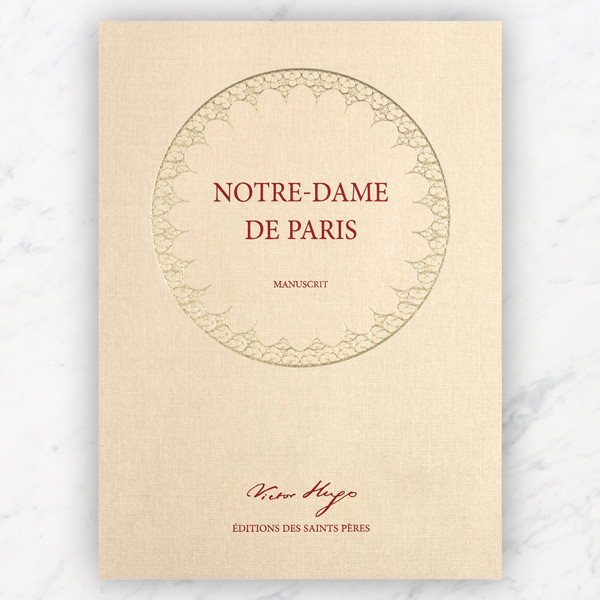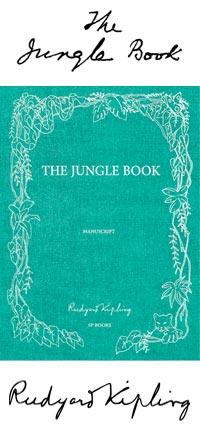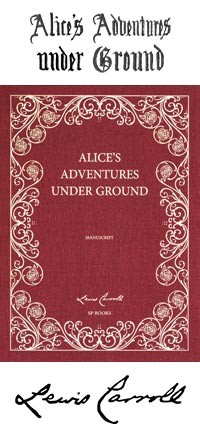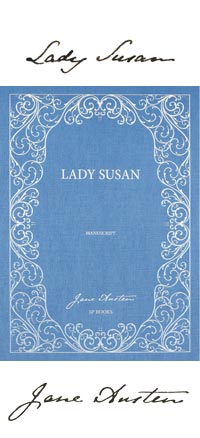Notre-Dame de Paris by Victor Hugo
Notre-Dame de Paris, Victor Hugo's manuscript

Conserved at the National Library of France (BnF), the full manuscript of Notre-Dame de Parisem> is published for the first time ever in France in our beautiful boxed set edition. It is a novel that Victor Hugo conceived of as ‘both drama and epic, picturesque but poetic, real but ideal, true but great, which inscribes Walter Scott in Homer.’

An early career before Notre-Dame de Paris
From the age of 14, Hugo wanted to be ‘Chateaubriand or nothing.’ He created a literary periodical with his brothers (Le Conservateur littéraire) and wrote poems while he was a student at the Cordier boarding school in Paris. Encouraged by his mother, at 15 he took part in a poetry competition organised by the Académie Française on the theme ‘Happiness as dependent on study in all aspects of living’. His poem received an honourable mention. Soon afterwards, he began to rub shoulders with leading Romantic minds of the time, including Alfred de Vigny, Lamartine, Charles Nodier, and founded the literary circle Le Cénacle. His first poetry collection Odes was published in 1822, the same year he married his childhood friend Adèle Foucher. It signalled the beginning of a long and rich career at the forefront of French Romanticism, characterised by the scandalous reception of his play Hernani (1830).
The birth of the manuscript
Highly influenced by the English Gothic, and infatuated with the historical novel as well as the Medieval period, it was during this fruitful decade that Victor Hugo set out to write his very first masterpiece: Notre-Dame de Paris. In 1825, Hugo had already expressed his view on the importance of preserving French heritage (see Sur la destruction des monuments en France). Notre-Dame de Paris was intended to reinvigorate the general public’s attachment to the cathedral. In 1835, Hugo joined the Commission for Monuments and instigated the building’s restoration, which was approved by Louis-Philippe in 1844 and executed by the architect Violet le Duc.
For his writing, Victor Hugo researched extensively, amassing endless documents. He read the academic authorities on his subjects – Du Breul, Sauval, Commynes and Mathieu – to get a precise idea of events during the reign of Louis XI and the state of Paris at the end of the 15th century, which furnished his historical settings.
Fully absorbed by his novel and no doubt seized by a certain dizziness at the extent of his assemblage, he noted, ‘I pile up page upon page, and the material stretches and extends itself so far in front of me as I advance that I do not know if I won’t write up to the towers.'

A cult classic
Notre-Dame de Paris first appeared in March 1831: it had been promised to Hugo’s publisher Charles Gosselin several years beforehand (the contract was signed in 1828), though it took Hugo three years to deliver the remarkable novel, which was inspired by the inscription ANÁIKH (fatality, in Greek) that he saw etched in the mythical cathedral of l’île de la Cité, Paris. The delay can be pinned to a lost notebook and a series of political events. In the manuscript, Hugo specifies: ‘I wrote the first three or four pages of Notre-Dame de Paris on July 25, 1830. The July revolution interrupted me [...]. I resumed writing Notre-Dame de Paris on September 1 and the work was completed on January 15, 1831.’

The novel was met with immediate success on publication. In one month, four successive editions were released. The text was translated into multiple languages, and Hugo adapted it into an opera libretto in 1836. The adventures of Quasimodo, Esmeralda, Phoebus and Frollo can be seen in numerous ballets, musicals, plays and films.
The publication of the novel on 16 February 1831 passed on that day unnoticed, relegated to the background of other events that shook the capital – the funeral service in memory of the Duke of Berry at Saint Germain de l'Auxerrois which provoked a riot. A few days afterwards, the press finally took an interest in Notre-Dame de Paris. It was acclaimed by the public and critics alike, so much that Lamartine proclaimed: ‘It is the Shakespeare of the novel, a colossal work, an antediluvian stone, the epic of the Middle Ages! The author is raised above the towers of Notre-Dame!’, while Baudelaire affirmed Hugo’s ‘genius without limits’. In contrast, Balzac commented pithily: ‘Two beautiful scenes, three words, the whole implausible, two descriptions, beauty and the beast, and a deluge of bad taste; a fable without possibility and above all a boring, empty work, full of architectural pretension.’
is sold out.

The Oxford blue edition,
hand numbered, is sold out.
This Ivory edition
is unnumbered.
Suscribe to our newsletter &
keep up with our latest news
and publications.
The treasured manuscripts of Victor Hugo
This manuscript was used for the first edition of the text. In the margins are the names of the typographers – Charles, Eugene, Lévi, Michel… to whom Hugo left instructions: ‘This is section 2 of Book 3. I will give you the rest after tomorrow morning.’ The descriptions and historical notations are often underlined, and the attentive reader will uncover intriguing elements within the pages: calculations, equations, several drawings of faces or animals, arabesques, and even a sketch of Quasimodo’s silhouette (see appendices). A few pages that were stolen from the printing press (from Chapter 2 of Book 9, “Hunchback; Borgne et Boiteux”) were rewritten by Hugo and found in 1902.
Victor Hugo took great care with his manuscripts. He chose his pens and papers carefully, and after his exile preferred to write on large bluish pages that he folded in half. He left margins on the left-hand side for additions, erasures, or sometimes sketches. Except for those gifted to his friends, his manuscripts were kept in a trunk watched over by his relatives (his mistress Juliette or her sister-in-law), who brought them with her between Brussels, Jersey and Guernsey.
A codicil to his will was added on 31 August 1881, for the attention of his executor Paul Meurice, confiding: ‘all that has been written or drawn by me is at the National Library of Paris, which will one day be the Library of the United States of Europe.’

A Deluxe edition

Deluxe edition
This Ivory edition is presented in a large format handmade slipcase.
Printed with vegetal ink on eco-friendly paper, each book is bound and sewn using only the finest materials.
Mrs Dalloway: Thanks to a new reproduction of the only full draft of Mrs. Dalloway, handwritten in three notebooks and initially titled “The Hours,” we now know that the story she completed — about a day in the life of a London housewife planning a dinner party — was a far cry from the one she’d set out to write (...)
The Grapes of Wrath: The handwritten manuscript of John Steinbeck’s masterpiece The Grapes of Wrath, complete with the swearwords excised from the published novel and revealing the urgency with which the author wrote, is to be published for the first time. There are scarcely any crossings-out or rewrites in the manuscript, although the original shows how publisher Viking Press edited out Steinbeck’s dozen uses of the word “fuck”, in an attempt to make the novel less controversial. (...)
Jane Eyre: This is a book for passionate people who are willing to discover Jane Eyre and Charlotte Brontë's work in a new way. Brontë's prose is clear, with only occasional modifications. She sometimes strikes out words, proposes others, circles a sentence she doesn't like and replaces it with another carefully crafted option. (...)
The Jungle Book: Some 173 sheets bearing Kipling’s elegant handwriting, and about a dozen drawings in black ink, offer insights into his creative process. The drawings were not published because they are unfinished, essentially works in progress. (...)
The Lost World: SP Books has published a new edition of The Lost World, Conan Doyle’s 1912 landmark adventure story. It reproduces Conan Doyle’s original manuscript for the first time, and includes a foreword by Jon Lellenberg: "It was very exciting to see, page by page, the creation of Conan Doyle’s story. To see the mind of the man as he wrote it". Among Conan Doyle’s archive, Lellenberg made an extraordinary discovery – a stash of photographs of the writer and his friends dressed as characters from the novel, with Conan Doyle taking the part of its combustible hero, Professor Challenger. (...)
Frankenstein: There is understandably a burst of activity surrounding the book’s 200th anniversary. The original, 1818 edition has been reissued, as paperback by Penguin Classics. There’s a beautifully illustrated hardcover, “The New Annotated Frankenstein” (Liveright) and a spectacular limited edition luxury facsimile by SP Books of the original manuscript in Shelley's own handwriting based on her notebooks. (...)
The Great Gatsby: But what if you require a big sumptuous volume to place under the tree? You won’t find anything more breathtaking than SP Books ’s facsimile of F. Scott Fitzgerald’s handwritten manuscript of The Great Gatsby, showing the deletions, emendations and reworked passages that eventually produced an American masterpiece (...)
Oliver Twist: In the first ever facsimile edition of the manuscript SP Books celebrates this iconic tale, revealing largely unseen edits that shed new light on the narrative of the story and on Dickens’s personality. Heavy lines blocking out text are intermixed with painterly arabesque annotations, while some characters' names are changed, including Oliver’s aunt Rose who was originally called Emily. The manuscript also provides insight into how Dickens censored his text, evident in the repeated attempts to curb his tendency towards over-emphasis and the use of violent language, particularly in moderating Bill Sikes’s brutality to Nancy. (...)
Peter Pan: It is the manuscript of the latter, one of the jewels of the Berg Collection in the New York Public Library, which is reproduced here for the first time. Peter’s adventures in Neverland, described in Barrie’s small neat handwriting, are brought to life by the evocative color plates with which the artist Gwynedd Hudson decorated one of the last editions to be published in Barrie’s lifetime. (...)
Customer reviews
Maravilhoso
Excellent. Tout était impeccable en cette période troublée et ceci depuis la commande jusqu’à la livraison. Achat à recommander pour l'offrir, les yeux fermés, à toute personne aimant les beaux articles de la culture française et ceci en toute confiance en l'éditeur qui propose des avec tout le respect de la qualité du produit proposé.
Extraordinaire et majestueux






















Un magnifique ouvrage, devenu une des pierres angulaires de ma bibliothèque… Merci infiniment.
Cet ouvrage est absolument magnifique. Jeune étudiant en Lettres Modernes, Hugolien dans l'âme, je rêvais de pouvoir un jour m'offrir ce manuscrit qui est celui, selon moi, du plus grand chef d'oeuvre de Hugo. La qualité du papier est remarquable, l'impression est soignée...
Hugo n'est pas l'auteur le plus facile à lire uniquement à l'écriture, et il faut dans un premier temps disposer d'une autre édition pour pouvoir suivre l'écriture de l'auteur. Néanmoins, quel plaisir de pouvoir commencer à discerner seul(e) les phrases après un temps d'adaptation !
Je recommande cette édition à tous les passionné(e)s de Hugo, qui trouveront leur bonheur avec ce manuscrit, à n'en pas douter !
J'ai entendu la "publicité" de ce bouquin ce matin à la radio (France Inter) et je suis tout de suite tombée amoureuse de cette œuvre d'art. Je le veux! Je passe ma commande tout de suite. Hâte de l'avoir entre mes mains.